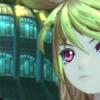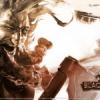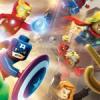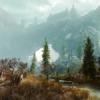In discussions about classic RPGs, Suikoden II is often overlooked. This is no surprise, as the game had a rather limited print run; today, copies can run for several hundred dollars on Ebay.
Thankfully, if you don’t have that kind of money to spend, it looks like you soon might be able to experience the game thanks to publisher Konami. With the news that it looks as though the cult classic RPG is finally making its way onto the PlayStation Network (as spotted by Kotaku), we thought that it was a good time to take a look back into the annals of history (well, 1998) and revisit the game.
It’s always been surprising that the classic series never received any of the PlayStation re-releasing re-mastering love that many other RPGs have received thanks to the PlayStation Classics program. However, this decision has always been up to Konami. Thankfully, it looks as though they’ve seen how well rivals such as the classic Final Fantasy games have sold to warrant the re-release of Suikoden II. The first instalment of the Suikoden series was made available on PSN several years ago, but the most-loved game of the series has always been its sequel.
The franchise is known for its large cast of playable heroes – known as the 108 stars. Ranging from battle-hardened war veterans to flying circus squirrels (yes, really), the cast of Suikoden II is indeed varied and filled with a variety of unique characters, all with their own little stories and arcs to uncover. As you recruit these heroes, they will take on various roles within your army.
The extensive cast is a unique and notable feature that is a staple of every Suikoden game, and you are encouraged to seek out every hero you can to join your army. Should you recruit all 108 characters you will unlock something special, but we’ll not spoil the surprise. Good luck.
Another reason to recruit all 108 unique characters is that they will be joining you in your fight against the Kingdom of Highland who has illegally invaded the City-State of Jowston. Of course, every hero needs a villain to fight, and in Suikoden II that villain is Luca Blight, whose lust for power shatters nations. He has some of the most memorable lines in the game, with dialogue that brings to mind Kefka from Final Fantasy VI.
In fact, despite being released in 1998, during a time when so many games were choosing to ape Square’s success with Final Fantasy VII, it’s the sixth game in that series which Suikoden II more strongly resembles, refining or otherwise building on many of its elements.
Runes are behind much of the lore of the Suikoden franchise, and the True Runes are the driving force behind many of the series’ plots. At the start of Sukioden II, the main Hero and his boyhood friend Jowy are destined to find two of these True Runes that will be at the heart of the game. True Runes grant their wielder immense powers and everlasting life. However, Suikoden II doesn’t focus as much on the conflict of the Runes as some of the other games in the series, and instead choosing to focus more on the military conflict that is unfolding in the land.
The game’s plot is almost unique to RPGs - centered not on some massive world-ending supernatural event, but on a growing political and military threat. The story unfolds on a political level that involves normal people protecting their way of life and sovereignty from an invading nation.
At the onset of the game the Highland Army, led by Luca, stages an attack against one of their own battalions mere hours after a peace treaty has been signed with Jowston. Highland then uses this ruse to justify a war with Jowston and surrounding city-states.
The invasion of Jowston spirals the whole region into chaos. As the world is plunged into a state of war, our nameless (you choose his name) protagonist joins forces with a resistance movement of smaller city-states to defend against the massive Kingdom. The player must travel throughout the countryside to recruit other city-states and Heroes of Destiny to join in the defense against Highland’s aggression.
The combat isn’t difficult to grasp and has enough variety to not become boring and tedious. As the player advances through the game their roster will change dramatically from story beat to story beat, and it is fun to have a constant change of faces. Combat in Suikoden II takes on several forms, but the meat and potatoes are to be found in the random encounters so beloved in the JRPG genre. The player controls a party of six - considerably more than in most RPGs - in a traditional turn-based style that sees you selecting various options from a series of menus. You’ll set up the commands of your entire party at the start of each round, then confirm your decisions and watch the round play out.
The six-member party system offers a wide variety of tactics and variation between group members. Enemies and Character Heroes are divided up into three categories of combat types; ranged, which can only attack from the back row; melee, which attacks from the front row; and hybrids, that can attack from either row. There’s a large roster of characters to choose from, and each offers their own unique abilities to the team. Characters also can engage in combined attacks between two or more party members. These can be extremely powerful in the early game. However, the combo attacks usually come with a drawback to the characters, adding some tactical depth to the system.
Magic comes in the form of Runes that can be equipped to each Hero to provide either passive abilities or active magic skills during combat. Each rune has a number of charges that varies depending on the wielders ability to use magic; strong magic users can have triple the amount of runic charges than a weaker caster.
As your Hero builds up his army in preparation for the war of resistance against the Kingdom, your field army will grow with each new character recruited. You can arrange these heroes into squads that are used in large-scale army battles that happen around every major story beat within the conflict. Recruited heroes provide unique abilities and stat buffs to their squads, such as healing, calvary, extra units, and magic. In a departure from genre convention, should a hero die on the battlefield, they will die permanently and be removed from the game - which will impact your battle parties and your ability to acquire all 108 unique Heroes that will populate your Castle. Regular saving is therefore encouraged.
Another defining characteristic of the Suikoden franchise is the player’s headquarters, that takes the form of its own character as you progresses through the story. As you recruit the various heroes to your cause, you send them off to North Window Castle, a suitably grand multi-floor structure that soon becomes teeming with life. Before you can do that, however, the Castle must first be cleansed of a Vampire Lord that has taken up residence.
The castle itself becomes an ever-changing character within the story as you continue to repair and build up your army. The more heroes you recruit during the course of the game, the larger the castle grounds will grow. It can be filled with unique shops and special areas where side-missions and events take place. Newly-recruited heroes will open up their own shops; these vary from cafes, bath houses and schools.
However, despite a certain degree of levity, you’re rarely left in any doubt of your driving purpose behind all of this. The castle grounds are home to a massive military operation and the ever-looming threat of war hangs in the air. The castle is outfitted with blacksmiths, armories, barracks and training grounds – all serving as a reminder that this is a place to prepare war.
Unfortunately, this type of RPG just isn’t made anymore. Suikoden II is a huge game, rammed to the hilt with content and secrets to be discovered. There are smaller events that take place outside of the larger narrative of the war, the aforementioned 108 heroes to collect, and plenty to keep you busy for weeks.
While the graphics may look simple – the game’s 16-bit looks were retro even when it was first released – the world of Suikoden II remains a rather attractive place to inhabit. There’s some lovely pixel art here; characters are expressive and easily distinguishable from each other, while each town has its own unique style, rather than simply sharing a tile-set with all the others. Animation in combat is relatively simple, but some of the magic effects still manage to impress, with good use of sprite scaling and transparencies, and some nice lighting effects
The music might be played in midi rather than being fully orchestrated, but it it’s stood the test of time well. The composers – Miki Higashino and Keiko Fukami - push the boundaries of the midi player to come up with some iconic and memorable music across a staggering 105 tracks; the result is a soundtrack to rival that of any of its nearest rivals. Every village, region, and town has its own unique music that matches with the art style of the location, which really aids with the immersion of the gameplay and story.
Role-playing game fans of any age will surely not want to miss the digital release of Suikoden II when it finally makes its way back onto the marketplace. It deserves to be explored and experienced by a new generation of players who missed it the first time around. They just don’t make them like this anymore, and it’s a shame. Suikoden II is a timeless classic, but it doesn’t have to stand as a relic of a bygone era. Publishers and developers will only make RPGs like this again if there is a monetary demand for them, and while it’s unlikely that the game’s re-release will spark a newfound surge of popularity for the sadly ailing JRPG genre, hopefully it does lead to a few new fans.
It certainly deserves them.





